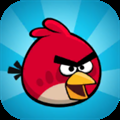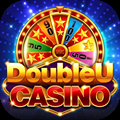Persian-Inspired 30 Birds Is A Unique Blend Of History And Modernity

Summary
- The creators of 30 Birds were inspired by the beauty of Istanbul, resulting in a unique blend of Persian art and literature.
- The game features hand-drawn graphics inspired by medieval Ottoman textbooks, creating a vibrant and dynamic aesthetic.
- 30 Birds offers a mix of historical themes blended with modern influences.
It was hard not to notice the vibrantly eye-catching 30 Birds at WASD in London last week. Walking past the booth and seeing players rotating on-screen lanterns for characters to roam around and solve puzzles immediately captures your attention, and you can’t help but linger to see how it all unfolds.
This narrative puzzle game follows the human Zig in their quest to rescue the bird goddess Simurgh. At the show, I spoke with Arte France interactive commission editor Lili Blumers, Arte France community developer, Delilah Escherich, and RamRam writer Jonathon Mayes.
RelatedThis Indie Dev Explains Why They Make Games For Free
Indie developer Ludipe tells me why they make fun games and offer them up for free.
PostsThey tell me that the creators of 30 Birds, Coline Sauvand and Laurent Toulouse, were inspired after a trip to Istanbul. The beautiful scenery and culture inspired them so much that first, they created a book of drawings and stories, before the idea for a game inspired by Persian art and literature came along.
While in Istanbul, Sauvand purchased medieval Ottoman textbooks complete with miniatures, which largely inspired the game’s aesthetic, with its brightly coloured hand-drawn graphics reminiscent of papercraft or even stained glass, considering how the world shifts and glows before your very eyes. 30 Birds features a unique concept where the world consists of lanterns, and as you run around the environment, you are positioned on a lantern that rotates and illuminates everything from behind.
The story is based on the poem ‘The Conference of the Birds’ by Sufi poet Attar of Nishapur, in which a hoopoe bird collects different birds to find the goddess of the world, though Mayes tells me other classic literature also played a role, “I think there’s also a lot of references to the structure of One Thousand and One Nights, as Laurent asked me to read that when I started writing the style.”
Toulouse really wanted to create a game with a focus on music, which led to the unique fusion of styles, “[30 Birds has] got this kind of weird atmosphere, right?” Mayes says. “Because Laurent really likes reggae and ska music, which if you kind of juxtapose that to Arabic and Eastern music, it's not really Turkish.”
ClosePuzzles can vary from kaleidoscopic conundrums, where you adjust dials to match images, to musical mysteries, such as matching tunes and hitting the right notes. The team tells me that Toulose is “really good at maths. He’s got a very mathematic brain,” and that’s conveyed in the various types of puzzles found throughout 30 Birds.
The publishing team at Arte France also got involved with playtesting, especially as some of the puzzles were hard to figure out, with Blumers telling me, “Some of the puzzles were so difficult that they were not even playable.” I’m told that the Firebird quest in the Ruins is one of the harder puzzles in the game because it has many aspects, with Mayes saying it was “tough to get the dialogue” because they needed it to “say enough to push the player towards it without giving away too much.”
They promise there is sound logic to this particular puzzle, and how it can be solved by working out clues as to where a character is looking and parsing clues from dialogue, but many of them just brute-forced it. Blumers explains, “I think we all could do it, but we thought it was random. It was difficult to understand the logic of it.”
“It's a kind of hallmark of puzzle games to have at least one or two complicated puzzles,” Mayes adds, and I definitely agree with him. Puzzle games have to find that fine balance of being challenging but not frustrating, but they also can’t be too easy, with many classics having at least one puzzle that you get stuck on for ages. The goat puzzle in Broken Sword, for example. Mayes tells me he feels developers “have a bit more leeway to be difficult nowadays” given that in this digital age, it’s far easier to look up solutions.
In addition to its quirky balance between Persian aesthetic and reggae/ska music, 30 Birds effectively blends older themes with modern language. Mayes describes the world of 30 Birds as “uniquely historical and modern at the same time,” telling me about a quest that involves people calling into a radio station. He says more modern influences like the sitcom Frasier helped to influence these scenes, while comedy puzzle games like Grim Fandango and other works by Tim Schafer also influenced him.
The team wanted the characters to feel authentic. For example, Hoopoe’s character evolves and changes as you progress through the story. Another one of the bird characters, Pigeon, is a philosopher who has “completely awkward conversations” with Zig, with Mayes telling me they channeled the sort of people who love to fake philosophise through Pigeon.
30 Birds has a lot going on, with a strong focus on art style and music, intriguing puzzles, a unique lantern mechanic, and all while blending historical influences with modern comedy. 30 Birds is set to launch later this year and you can wishlist it on Steam here.
NextIndie Devs Discuss The State Of The Industry, Struggles To Get Funding, And The Importance Of Wishlisting
While at WASD in London, I spoke with different indie developers about the current climate of the gaming industry.
Posts












